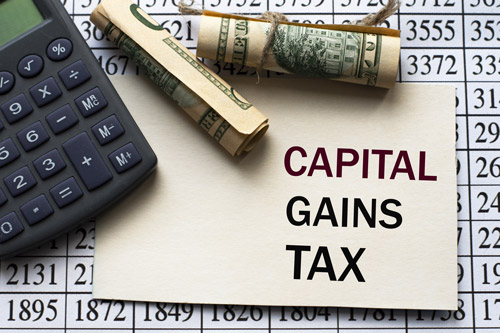Saving money is all well and good in theory.
It’s pretty hard to argue against having more money in the bank.
But what are you saving for? If you don’t have solid financial goals, all those hoarded pennies might end up in limbo when they could be put to good use.
Figuring out where your money should go might seem daunting, but it’s actually a lot of fun.
You get to analyze your own priorities and decide exactly what to do with your hard-earned cash.
But to make the most of your money, follow a few best practices while setting your goals.
After all, even if something seems like exactly what you want right now, it might not be in future-you’s best interest. And you’re playing the long game… that’s why they’re called goals!
What to Do Before You Start Writing Your Financial Goals
To help keep you from financial goals like “buy the coolest toys and cars,” which could easily get you deeply into debt while you watch your credit score plummet, we’ve compiled this guide.
It’ll help you set goals and create smart priorities for your money. That way, however you decide to spend your truly discretionary income, you won’t leave the 10-years-from-now version of you in the lurch.
First Thing’s First: How Much Money Do You Have?
You can’t decide on your short- or long-term financial goals if you don’t know how much money you have or where it’s going.
And if you’re operating without a budget, it can be easy to run out of money well before you run out of expenses — even if you know exactly how much is in your paycheck.
So sit down and take a good, hard look at all of your financial info.
A ton of great digital apps can help you do this — here are our favorite budgeting apps — but it can be as simple as a spreadsheet or even a good, old-fashioned piece of paper. It just takes two steps:
Figure out how much money you have. It might be in checking or savings accounts, including long-term accounts like IRAs. Or, it might be wrapped up in investments or physical assets, like your paid-off car. Assess any debts you have. Do you keep a revolving credit card balance? Do you pay a mortgage each month? Are your student loans still hanging around?
Take the full amount of money you owe and subtract it from the total amount you have, which you discovered in step one. The difference between the two is your net worth. That’s the total amount of money you have to your name.
If it seems like a lot, cool. Hang tight and don’t let it burn a hole in your pocket. We’re not done yet.
If it seems like… not a lot, well, you can fix that. Keep reading.
 Create a Budget
Create a Budget
Once you’ve learned your net worth, you need to start thinking about a working budget.
This will essentially be a document with your total monthly income at the top and a list of all the expenses you need to pay for every month.
And I do mean all of the expenses — even that $4.99 recurring monthly payment for your student-discounted Spotify account definitely counts.
Your expenses probably include rent, electricity, cable or internet, a cell phone plan, various insurance policies, groceries, gas and transportation. It also includes categories like charitable giving, entertainment and travel.
Pro Tip
Print out the last two or three months of statements from your credit and debit cards and categorize every expense. You can often find ways to save by discovering patterns in your spending habits.
It’ll depend on your individual case — for instance, I totally have “wine” as a budget line item.
See? It’s all about priorities.
Need to go back to basics? Here’s our guide on how to budget.
Start by listing how much you actually spent in each category last month. Subtract your total expenses from your total income. The difference should be equal to the amount of money left sitting in your bank account at month’s end.
It’s also the money you can use toward your long-term financial goals.
Want the number to be bigger? Go back through your budget and figure out where you can afford to make cuts. Maybe you can ditch the cable bill and decide between Netflix or Hulu, or replace a takeout lunch with a packed one.
You don’t need to abandon the idea of having a life (and enjoying it), but there are ways to make budgetary adjustments that work for you.
Set the numbers you’re willing to spend in each category, and stick to them.
Congratulations. You’re in control of your money.
Now you can figure out exactly what you want to do with it.
Setting Financial Goals
Before you run off to the cool-expensive-stuff store, hold on a second.
Your financial goals should be (mostly) in this order:
Build an emergency fund. Pay down debt. Plan for retirement. Set short-term and long-term financial goals.
We say “mostly” because it’s ultimately up to you to decide in which order you want to accomplish them.
Many experts suggest making sure you have an emergency fund in place before aggressively going after your debt.
But if you’re hemorrhaging money on sky-high interest charges, you might not have much expendable cash to put toward savings.
That means you’ll pay the interest for a lot longer — and pay a lot more of it — if you wait to pay it down until you have a solid emergency fund saved up.
1. Build an Emergency Fund
Finding money to sock away each month can be tough, but just starting with $10 or $25 of each paycheck can help.
You can make the process a lot easier by automating your savings. Or you can have money from each paycheck automatically sent to a separate account you won’t touch.
You also get to decide the size of your emergency fund, but a good rule of thumb is to accumulate three to six times the total of your monthly living expenses. Good thing your budget is already set up so you know exactly what that number is, right?
You might try to get away with a smaller emergency fund — even $1,000 is a better cushion than nothing. But if you lose your job, you still need to be able to eat and make rent.
2. Pay Down Debt
Now, let’s move on to repaying debt. Why’s it so important, anyway?
Because you’re wasting money on interest charges you could be applying toward your goals instead.
So even though becoming debt-free seems like a big sacrifice right now, you’re doing yourself a huge financial favor in the long run.
There’s lots of great information out there about how to pay off debt, but it’s really a pretty simple operation: You need to put every single penny you can spare toward your debts until they disappear.
One method is known as the debt avalanche method, which involves paying off debt with the highest interest rates first, thereby reducing the overall amount you’ll shell out for interest.
For example, if you have a $1,500 revolving balance on a credit card with a 20{e1706a52c3b3138427a8e72931d9d59b6d08ac610477d60aad46d317c02b8d31} APR, it gets priority over your $14,000, 5{e1706a52c3b3138427a8e72931d9d59b6d08ac610477d60aad46d317c02b8d31}-interest car loan — even though the second number is so much bigger.
Pro Tip
If you’re motivated by quick wins, the debt snowball method may be a good fit for you. It involves paying off one loan balance at a time, starting with the smallest balance first.
Make a list of your debts and (ideally) don’t spend any of your spare money on anything but paying them off until the number after every account reads “$0.” Trust me, the day when you become debt-free will be well worth the effort.
As a bonus, if your credit score could be better, repaying revolving debt will also help you repair it — just in case some of your goals (like buying a home) depend upon your credit report not sucking.
 3. Plan for Retirement
3. Plan for Retirement
All right, you’re all set in case of an emergency and you’re living debt-free.
Congratulations! We’re almost done with the hard part, I promise.
But there’s one more very important long-term financial goal you most definitely want to keep in mind: retirement.
Did you know almost half of Americans have absolutely nothing saved so they can one day clock out for the very last time?
And the trouble isn’t brand-new: We’ve been bad enough at saving for retirement over the past few decades that millions of today’s seniors can’t afford to retire.
If you ever want to stop working, you need to save up the money you’ll use for your living expenses.
And you need to start now, while compound interest is still on your side. The younger you are, the more time you have to watch those pennies grow, but don’t fret if you got a late start — here’s how to save for retirement in your 20s, 30s, 40s and 50s.
If your job offers a 401(k) plan, take advantage of it — especially if your employer will match your contributions! Trust me, the sting of losing a percentage of your paycheck will hurt way less than having to work into your golden years.
Ideally, you’ll want to find other ways to save for retirement, too. Look into individual retirement arrangements (IRAs) and figure out how much you need to contribute to meet your retirement goals.
Future you will thank you. Heartily. From a hammock.
FROM THE BUDGETING FORUM Starting a budget 10/29/20 @ 5:43 PM S A reminder NOT to spend. 1/7/20 @ 12:55 AM ![]() Grocery Shopping – How far away is your usual store? 1/29/19 @ 9:29 PM F Budgeting 101 7/24/20 @ 2:11 PM
Grocery Shopping – How far away is your usual store? 1/29/19 @ 9:29 PM F Budgeting 101 7/24/20 @ 2:11 PM ![]() See more in Budgeting or ask a money question 4. Set Short-Term and Long-Term Financial Goals (the Fun Part!)
See more in Budgeting or ask a money question 4. Set Short-Term and Long-Term Financial Goals (the Fun Part!)
Is everything in order? Amazing!
You’re in awesome financial shape — and you’ve made it to the fun part of this post.
Consider the funds you have left — and those you’ll continue to earn — after taking care of all the financial goals above. Now think: What do you want to do with your money?
What experiences or things can your money buy to significantly increase your quality of life and happiness?
You might plan to travel more, take time off work to spend with family or drive the hottest new Porsche.
Maybe you want to have a six-course meal at the finest restaurant in the world or work your way through an extensive list of exotic and expensive wines. (OK, I’ll stop projecting.)
No matter your goals, it’s helpful to categorize them by how long they’ll take to save for.
Make a list of the goals you want to achieve with your money and which category they fall into. Then you can figure out how to prioritize your savings for each objective.
For example, some of my goals have included:
Short-term financial goal: Save spending money for a trip overseas. Medium-term financial goal: Pay off my car within a year, or sell it — and its onerous loan — and buy an older car I can own free and clear. Long-term financial goal: Buy a house I can use as a home base and increase my income by renting it out while I travel. This will probably take me through the rest of my 20s.
By writing down my short- and long-term financial goals and approximately how long I expect it will take to achieve each, I can figure out what to research and how aggressively I need to plan for each goal.
It also offers me the opportunity to see what I prioritize — and to revise those priorities if I see fit.
Jamie Cattanach (@jamiecattanach) is a contributor to The Penny Hoarder.
This was originally published on The Penny Hoarder, which helps millions of readers worldwide earn and save money by sharing unique job opportunities, personal stories, freebies and more. The Inc. 5000 ranked The Penny Hoarder as the fastest-growing private media company in the U.S. in 2017.
Read more: thepennyhoarder.com





